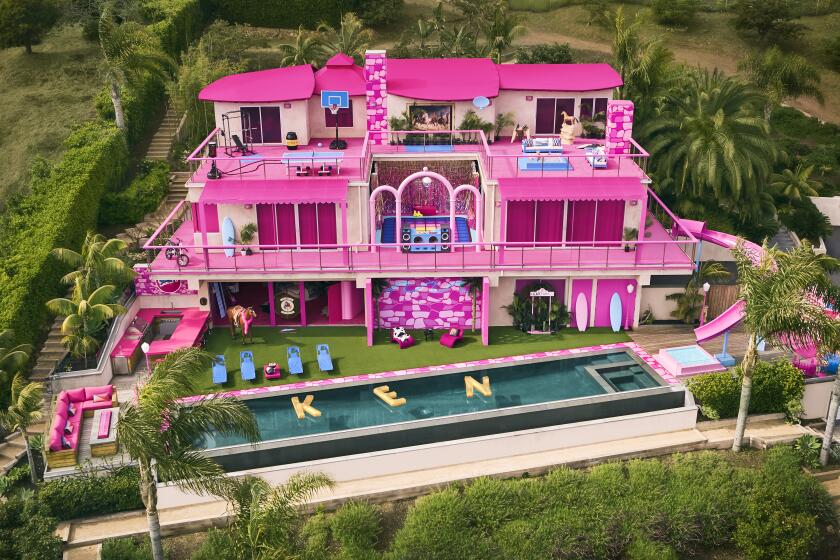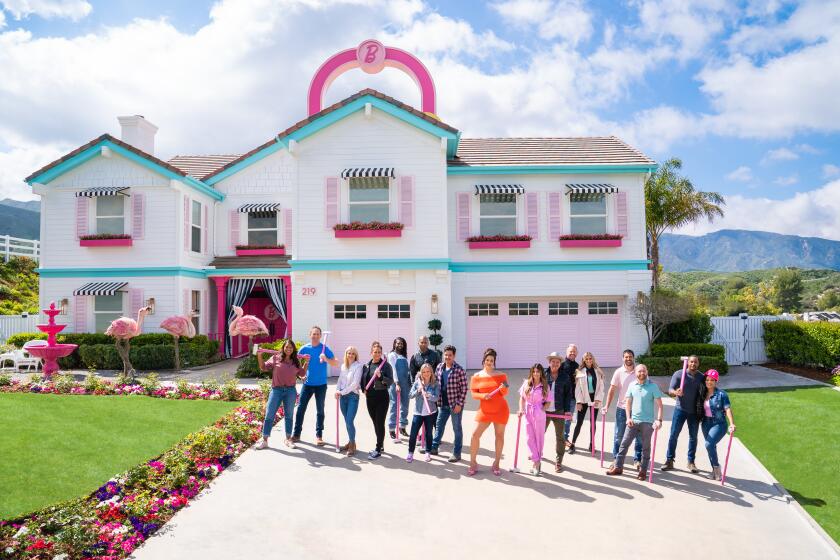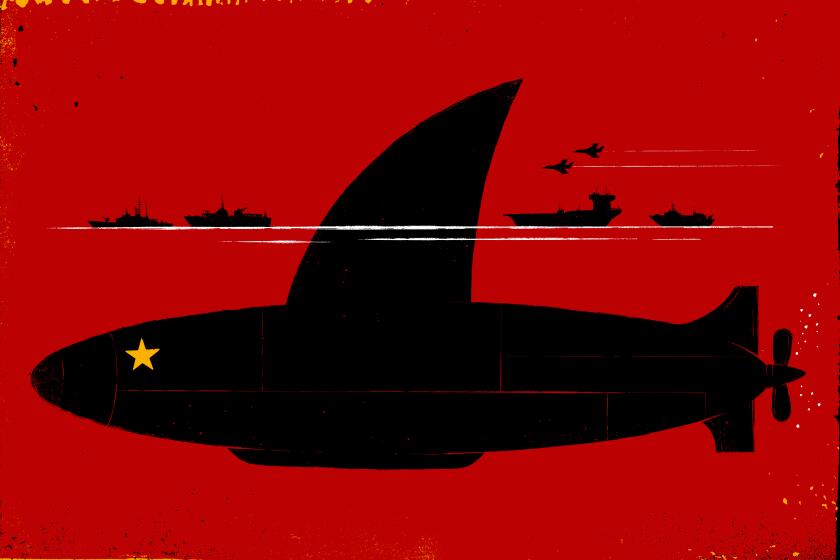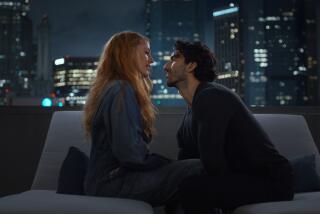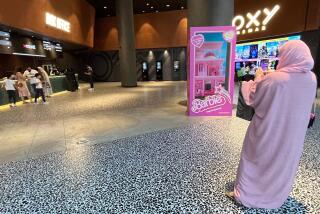How ‘Barbie’ crossed a line in Vietnam’s dispute with China and ended up banned
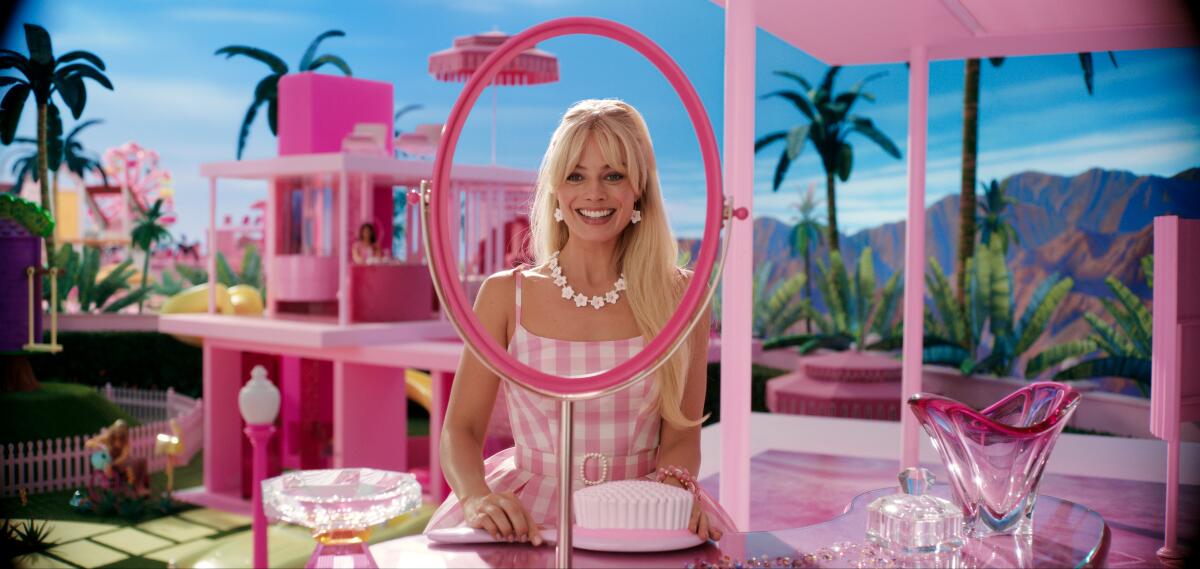
The upcoming movie “Barbie” has been banned in Vietnam.
Now, the Philippines is considering its own ban on the Warner Bros. film.
And it has nothing to do with the film’s excessive use of pink, or Ryan Gosling’s Ken-doll spray tan (or, self-tan?).
Greta Gerwig’s highly-anticipated summer flick has crossed a line by drawing a line — the controversial “nine-dash line” to be exact. It’s a dotted line that China uses when drawing its borders in the South China Sea. Southeast Asian countries such as Vietnam and the Philippines disagree with the line. Much of the international community, including the United States, also disputes the border.
It’s a political mess that “Barbie” most likely didn’t intend to step into, but here we are. Here is why such a small dotted line on a map — and how it’s depicted in the film — matters to Vietnam, China, and nearby countries.
Where does the map show up in the movie?
There are actually several maps with borders in the full-length “Barbie” trailer, released in May. The first is one of fictional Barbie Land — the city appears to be nestled along a body of water and at the foot of a mountain range, with pink clouds lining its borders that are fashioned into the shape of a heart.
Barbie’s real-life Malibu Dreamhouse will once again be available to book on Airbnb to promote the ‘Barbie’ movie. But this time Ken is hosting.
The second map, which Vietnamese entertainment writer Nguyên Lê pointed out on Twitter, depicts the world as we know it. The map appears as Barbie, played by Margot Robbie, is having an existential crisis. Her showers have gone cold, she’s fallen off her roof and her high-heeled feet have gone flat. During a disco party, she abruptly asks aloud, “Do you guys ever think about dying?” The record stops spinning, and fellow Barbies and Kens stop dancing and stare with mouths agape.
For answers, Margot turns to another Barbie, played by Kate McKinnon, who appears to live in a less-pink gated mansion, secluded from the the others. Inside the house, audiences see the map of our world, as Margot’s Barbie asks, “What do I have to do?”
“You have to go to the Real World,” McKinnon’s Barbie responds.
The map of “the real world” looks as if it’s been drawn in crayon by a child. Accompanying the wacky shapes are labels for each continent — Africa, “Australia, and the one that counts most in the story you’re reading right now, Asia. Alongside the coast of what should be China, a trail of dashes jut out into the map’s ocean.
We’re in our ‘Barbie’ era: From HGTV’s real-life dream house, to Barbie dolls that look like Margot Robbie, Issa Rae and America Ferrera.
It is not immediately clear whether the dashes were a reference to the “nine-dash line.”
Representatives for Warner Bros. did not immediately respond to The Times’ requests for comment.
Later in the trailer, we see Robbie’s Barbie driving her convertible car as she crosses the border of Barbie Land and into ours.
The nine-dash line’s origin
After World War II, China published a map in the late 1940s, showing a U-shaped line. The original map had 11 dashes, but two were given away in the 1950s, commonly accepted by historians as a concession to the fellow communist government of North Vietnam.
The U-shaped zone stretches 1,200 miles south of the Chinese mainland and encompasses more than 80% of the South China Sea. China’s government has claimed everything inside it, citing “historical rights.” And that includes islands and archipelagos. Some of those land masses are also claimed by Southeast Asian countries, such as Vietnam and the Philippines. To complicate things further, a large continental shelf stretches from mainland Vietnam beneath the eastern part of the sea, within China’s apparent “nine-dash line.”
But the land is only a way to justify who controls the waters: The South China Sea is among the world’s busiest fishing and trade hubs, and includes areas of untapped oil and natural gas.
Beijing’s aggressive South China Sea expansion shows its willingness to defy international laws for President Xi Jinping’s visions of power.
In recent years, China has built up its islands by dumping sand onto reefs as a way to lay claim to more of the zone’s waters. The island-building activities have led to military clashes between China and Vietnam, as well as the Philippines. The United States also entered the conflict with China, setting up military bases in the Philippines this year. In the past the U.S. has deployed warships and fighter jets, and have conducted military exercises in the area.
However, in 2016, an international tribunal at the Hague ruled that China’s “nine-dash line” is invalid and that China’s island-building efforts violate international law. Even so, the Chinese government has rejected the ruling and clashes in the sea, which threaten Vietnam’s ability to fish in the area, have continued. Vietnam sees China’s defiance as a threat to its sovereignty.
Will Vietnam and Philippine audiences ever see Barbie?
“Barbie” was originally set for a July 21 theatrical release, the same day as the United States, according to state-owned Vietnamese publication Tuổi Trẻ, which was first to report the news of the ban Monday.
The ‘Barbie’ film used so much pink paint that it depleted the global reserves of its supplier, Rosco, which were already limited by supply chain issues.
The ban was issued by the nation’s Ministry of Culture, Sports and Tourism’s Cinema Department, which cited the movie’s depiction of what appears to be “the illicit ‘nine-dash line’ that China uses to illegally claim its sovereignty over most of the East Vietnam Sea,” according to Tuổi Trẻ.
Hours before U.S. media outlets caught wind of the ban, Lê had reported the announcement late Sunday evening on Twitter, quoting the Vietnamese government’s language of the film’s use of “offensive political imagery.”
Both Lê and Tuổi Trẻ pointed out that this isn’t the first film to be banned in Vietnam over depictions of maps with the “nine-dash line.” Dreamworks’ 2019 animated film “Abominable” was also banned, along with the 2022 film “Uncharted,” starring Tom Holland. The Philippine government had called for a boycott of “Abominable” but stopped short of a ban.
The Philippine government also seemed poised to restrict “Barbie” viewership in the country after its Movie and Television Review and Classification Board placed the film under review. However, the agency did not specify the reason for its review.
“We confirm that the Board has reviewed the film ‘Barbie’ today, 04 July 2023,” the government said in a statement posted on the movie board’s website. “At this time, the assigned Committee on First Review is deliberating on the request of Warner Brothers F.E. Inc. for a Permit to Exhibit.”
‘Barbie’ star Ryan Gosling has a message for anyone who disapproves of his casting as Ken: ‘Like you ever thought about Ken before this?’
Although some disappointed moviegoers in Vietnam have suggested censoring the problematic map in the film, it remains unclear whether Warner Bros. would be able or willing to edit its final cut, and if the Vietnamese government would lift the ban under those conditions.
The Vietnamese government is also reportedly considering a ban on Christopher Nolan’s biographical thriller “Oppenheimer,” according to Viêt Nam News. The Universal Pictures period piece was also set for a July 21 release (the clashing releases have prompted the “Barbeinheimer” meme phenomenon).
A spokesperson for Vietnam’s cinema department did not immediately respond to The Times’ request for comment.
It’s also unclear how much revenue Warner Bros. could lose because of the ban. Vietnam’s highest-grossing film in 2022 was Warner Bros. “Avatar: The Way of Water,” which raked in more than $11,000,000, according to IMDb. Overall, the “Avatar” sequel grossed more than 10 times that amount in the U.S. during its opening weekend alone.
More to Read
Only good movies
Get the Indie Focus newsletter, Mark Olsen's weekly guide to the world of cinema.
You may occasionally receive promotional content from the Los Angeles Times.
